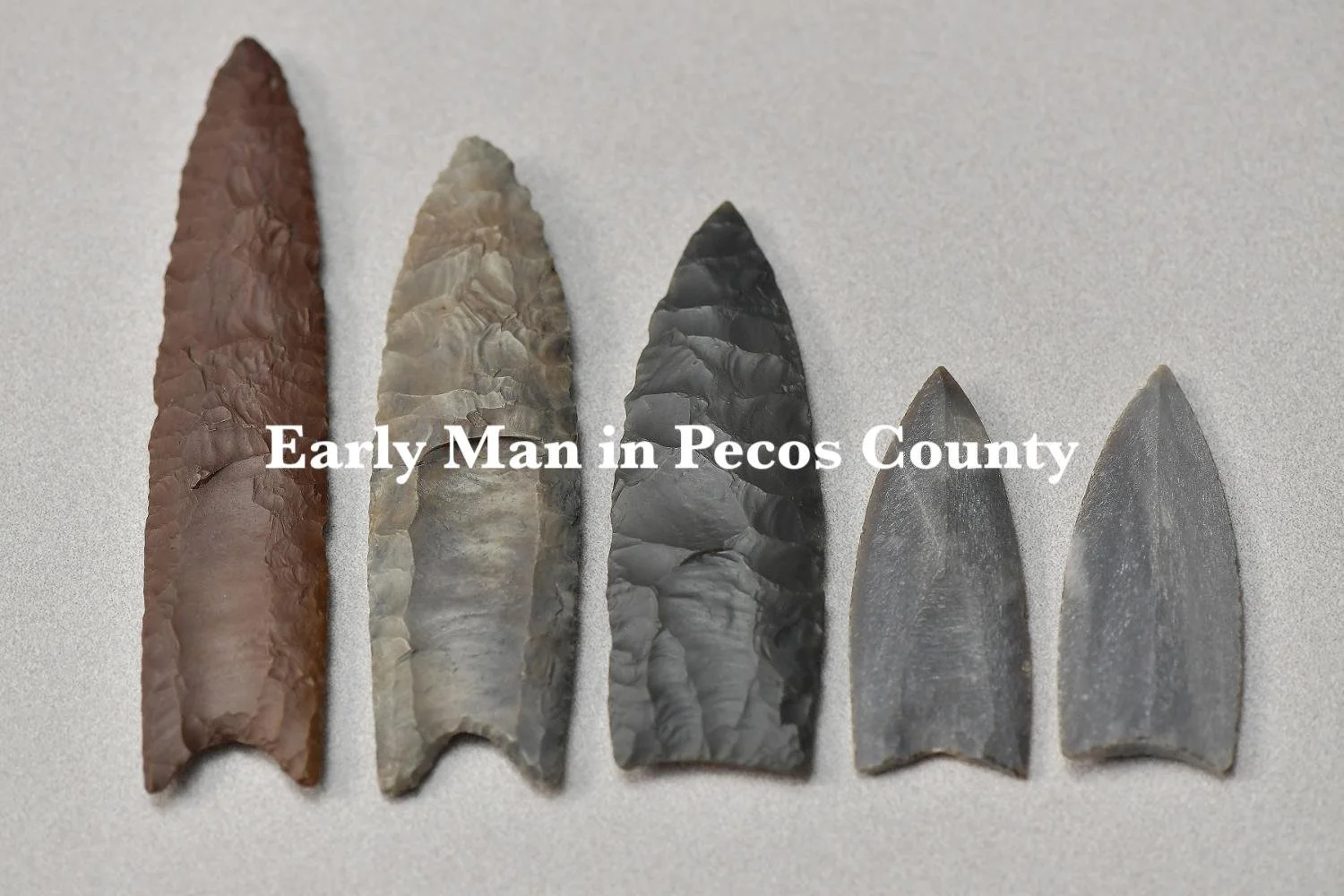It is difficult to imagine Pecos County as a lush area with high-volume springs and dense vegetation growing in the now-arid countryside. But that is what the countryside was like in 10,000 BC when large mammals, including the Columbian mammoth and early camels, horses and antelope roamed here in large numbers.
These animals were hunted by early man, for food and clothing from their hides.
The artifacts recovered by Dr. Frank B Warnock at nearby San Pedro Springs offer evidence of Clovis, and Sandia man, hunting, camping and butchering animals during the Pleistocene Era (from about 2,580,000 to 11,700 years ago) in Pecos County. The concentration of flint and bone artifacts show an occupation by Clovis and Sandia cultures, ending with the recent Plains Indian types (Comanche and Apache).
Early man had a remarkable ability as a hunter, with an exceptional skill in killing the large mammoths using flint projectiles fixed to spears and hurled with the aid of an atlatl, a tool that uses leverage to achieve greater velocity.
The atlatl served as a “cam” that added extra thrust to a spear when it was thrown.
After the kill was made, the animal was butchered with flint tools that required considerable ingenuity and skill to make and use.
The San Pedro Springs site is strategically located in alignment with Early Man sites in North America, meaning that primitive cultures from the north, south, east and west converged upon it as a camp and kill site. This discovery places man in Pecos County as far back as 10,000 BC, and perhaps even earlier.


